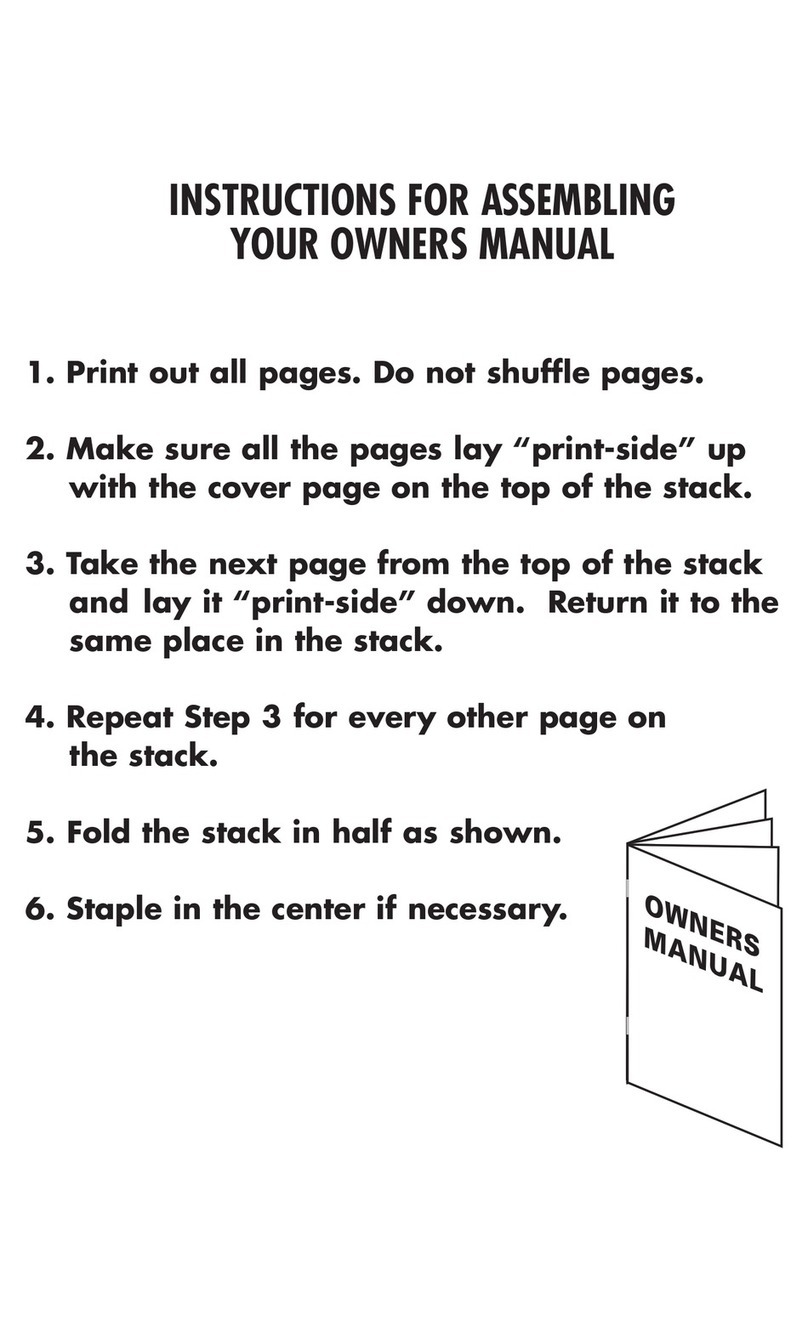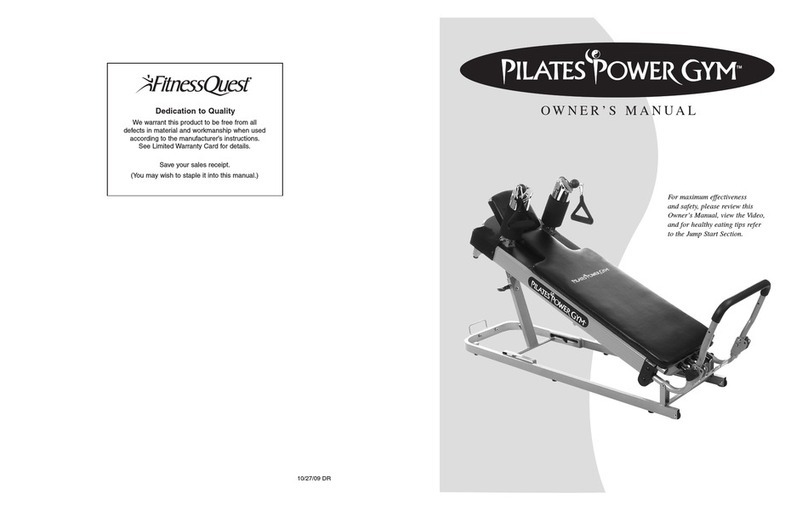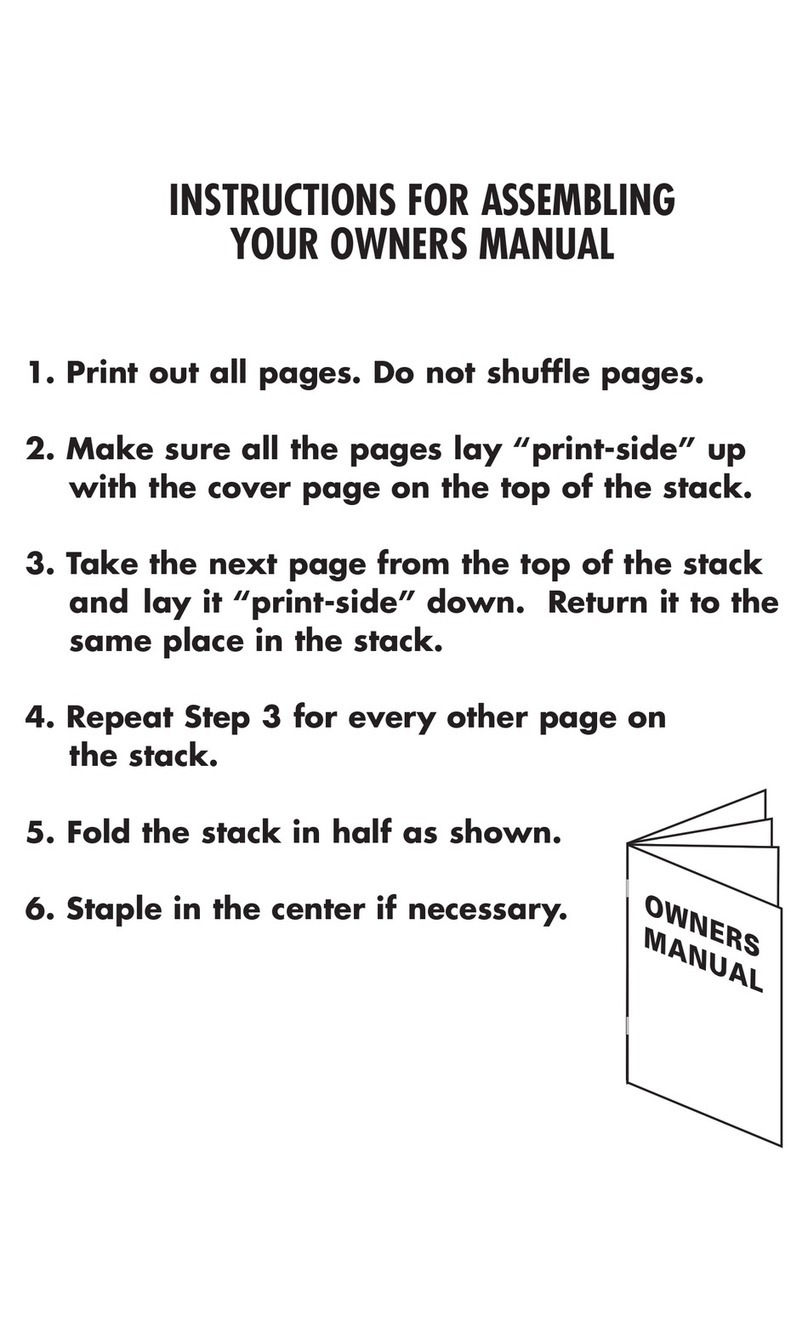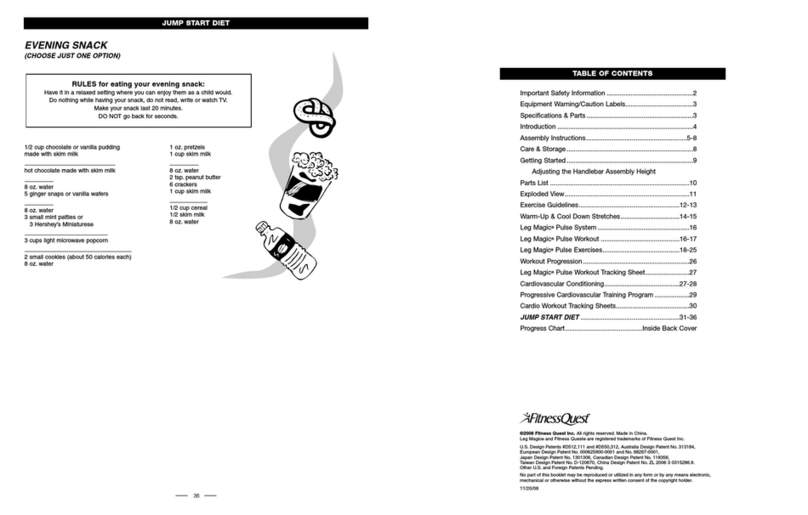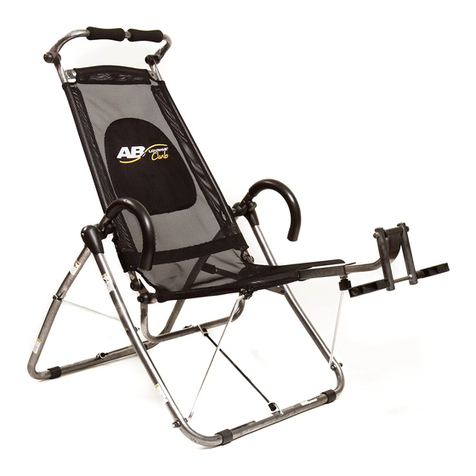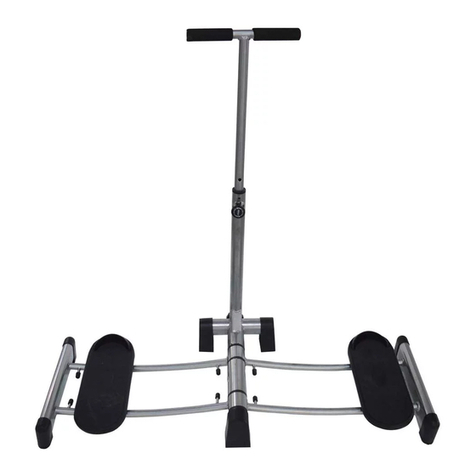
-------- 2--------
IMPORTANT SAFETY INFORMATION
1) Before starting this or any other exercise program,
consult your physician. Your physician should assist you in
determining the target heart rate zone appropriate for your
age and physical condition. Certain exercise programs or
types of equipment may not be appropriate for all people. This
is especially important for people over the age of 35, pregnant
women, or those with pre-existing health problems or balance
impairments. If you are taking medication which may affect
your heart rate, a physician's advice is absolutely essential.
2) Start out slowly and progress sensibly. Even if you are an
experienced exerciser, start with the beginner workout and
become familiar with all of the exercises before moving on to
more advanced workouts or exercises. or best results,
perform all of the exercises at the tempo demonstrated in
the DVD.
3) Do not overexert yourself with this or any other exercise
program. Listen to your body and respond to any reactions
you may be having. You must learn to distinguish “good” pain,
like fatigue, from “bad” pain, which hurts. If you experience
any pain or tightness in your chest, an irregular
heartbeat, dizziness, nausea, or shortness of breath,
stop exercising at once and consult your physician
immediately.
4) Warm up before any exercise program by doing 5
to 10 minutes of gentle aerobic exercise, such as
walking, followed by stretching or follow the warm-ups
demonstrated on the Pilates Power Gym™ DVD.
5) Before EACH use, visually inspect the equipment.
Never operate the equipment if the equipment is
not functioning properly.
6) USE CARE when getting on and off the equipment.
7) Use this equipment ON Y for the intended use
as described in this manual. Do not modify the
equipment or use attachments not recommended
by the manufacturer.
8) Have plenty of clearance behind and in front of
your equipment. It is important to keep children, pets,
furniture and other objects out of the way when using
your equipment. You should have a minimum of 3 feet of
clearance both in front of and behind your equipment.
9) Wear appropriate clothing when exercising. Workout
clothing should be comfortable and lightweight, and should
allow freedom of movement. The Pilates Workout may be
performed with bare feet, or you may wear flexible athletic
shoes if you find that more comfortable. It is not
recommended that you exercise with socks or stockings
only on the feet. Wearing socks or stockings only may cause
slippage of the feet when using the oot Rest Bar or Push
Up Bar.
10) THIS EQUIPMENT IS NOT FOR USE BY CHI DREN.
To prevent injuries, keep this and all fitness equipment
out of the reach of children. Follow these simple rules:
– Keep children out of rooms where you have
your exercise equipment.
– Store exercise equipment in a room that
can be locked.
– Know exactly where your children are when
you work out.
– If you have small children at home, don’t wear
headphones while you work out.
– Talk to your kids about the dangers of exercise
equipment.
11) Breathe naturally, never holding your breath during an
exercise. Avoid over training, you should be able to carry
on a conversation while exercising.
12) Cool down after an exercise session, with 5 to 10 minutes
of gentle exercise, such as walking, followed by stretching or
follow the cool-down stretches demonstrated in the Pilates
Power Gym™ DVD.
13) Handicapped or disabled people must have medical
approval before using this equipment and should be under
close supervision when using any exercise equipment.
14) Only one person at a time should use this equipment.
15) DO NOT put hands, feet, or any foreign objects
on or near this equipment when in use by others.
Use caution not to pinch fingers or hands in moving parts
when folding, setting up, or using the equipment.
16) To prevent the Pilates Power GymTM from tipping and
causing an injury, set up and use the equipment on a
solid, level surface and follow the exercise instructions
demonstrated in the DVD and the exercise instructions
described on pages
18 through 33
of this manual. ailure
to follow these instructions could result in serious injury
or death.
WARNING
OU AND OTHERS CAN BE SERIOUSL INJURED OR KILLED IF
WARNINGS ON THE EQUIPMENT, IN THIS OWNER’S MANUAL
AND VIDEO ARE NOT FOLLOWED.
Go to www.fitnessquest.com
or call 1-800-497-5831 for
replacement labels, manuals or video(s).





















